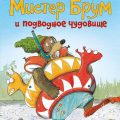Psychology "Kolobka"
This tale has a pedagogical subtextnot only for kids, but also for adults. Its plot is very simple and easy to remember. Therefore, when the child grows up, he will unconsciously use the conclusions from the fairy tale as life experience. After all, already in adulthood he will encounter people endowed with the qualities of a fast hare, an evil wolf, a strong bear and a cunning fox. The hidden meaning of the Kolobok fairy tale is to understand the consequences of disobedience. Photo: Getty Everything that Kolobok teaches can be divided into the following lessons:
The hidden meaning of the Kolobok fairy tale is to understand the consequences of disobedience. Photo: Getty Everything that Kolobok teaches can be divided into the following lessons:
- the consequences of disobedience;
- the opportunity to avoid trouble;
- recognition of good and evil.
Let's look at each point in more detail.Usually, kids always identify with the main character. Kolobok is a cheerful child who has a family. He has not yet grown up and has not gained any life experience, but has already decided to leave his father's house. It is important to note the fact that his "parents" did not give their consent, because Kolobok ran away from the old man and woman. In addition, he violated the ban on communicating with strangers. As a result, Kolobok was eaten. If the problem of disobedience is relevant in the family, at the end of the tale you can add: "This is what happens to children who run away from their parents and talk to strangers." Another hidden meaning of the tale is the ability of the main character to avoid trouble. Throughout the story, Kolobok encounters various dangers, but he managed to escape in time. To do this, the main character sang a song to distract the enemy and, thanks to the round shape of his body, quickly rolled away. This story teaches very young listeners to distinguish between good and evil. There are positive and negative characters in the tale. The former include the old man, the old woman and the main character, but all the animals are bad, because they want to eat the bun.
The sacred meaning of the fairy tale "Kolobok"
Initially, our ancestors had a different oneversion of the story. In it, the main character was represented by a round moon. There were more animals, which symbolized the constellations, and they all bit off a part of the bun. The ending of both tales is the same, only in the second case the fox got a very small part of the main character. Use this version of "Kolobok" to introduce your child to the lunar cycle and star constellations. When you read a fairy tale to your baby, be sure to think about the meaning behind it. After all, it is much more interesting and easier to raise a baby by telling a useful story at night.









